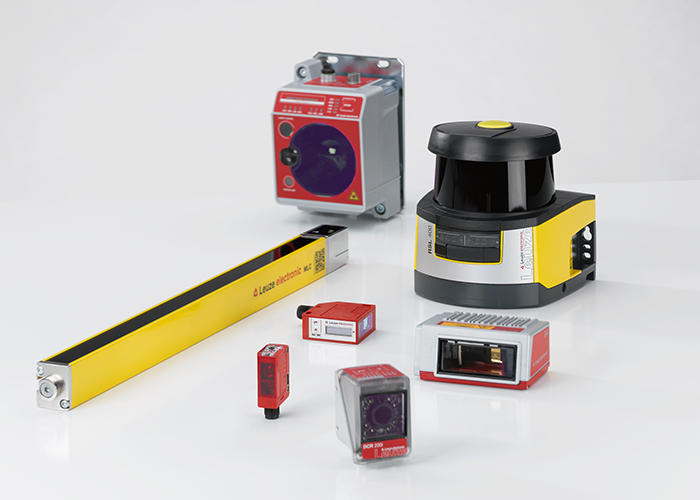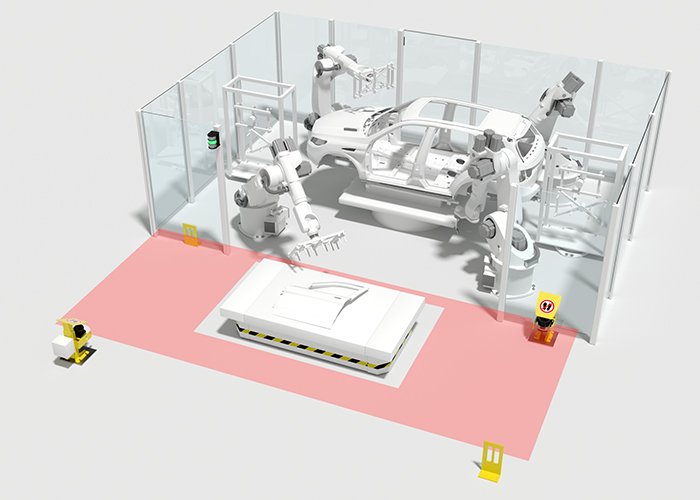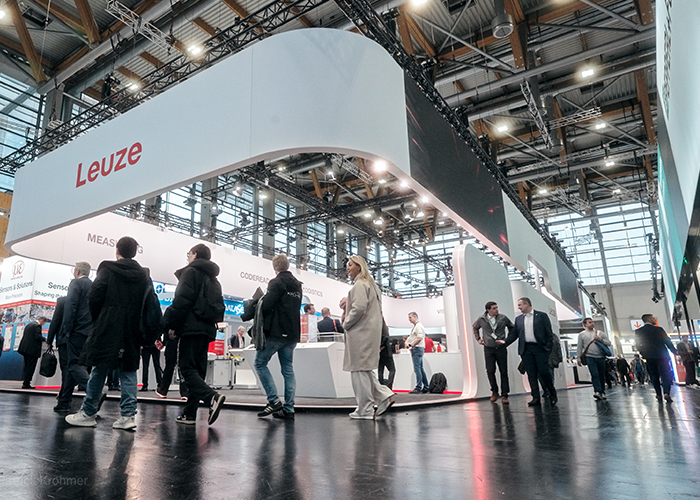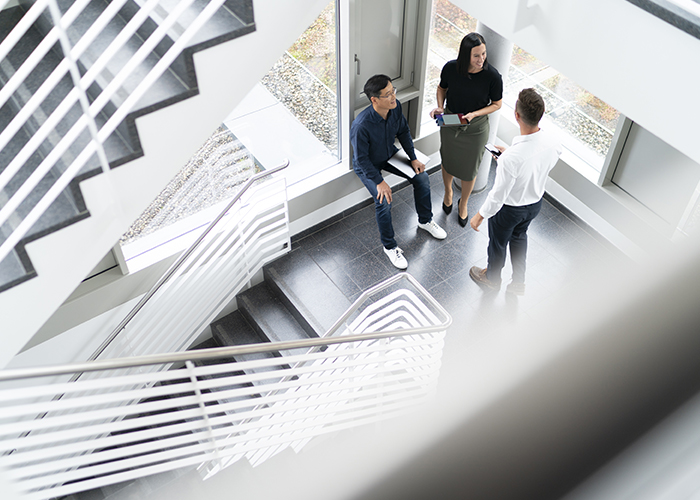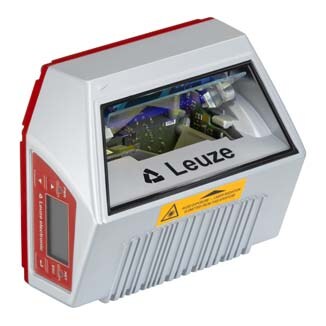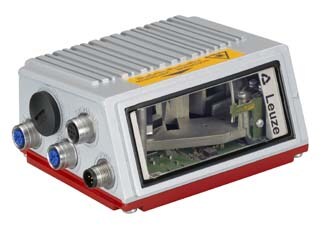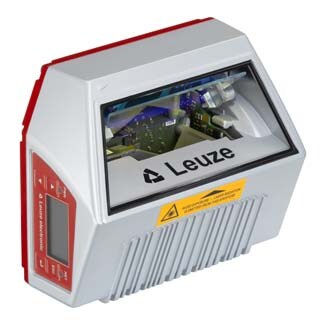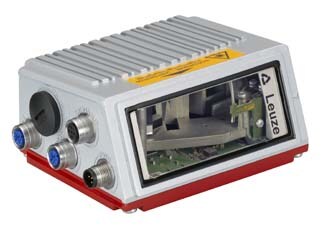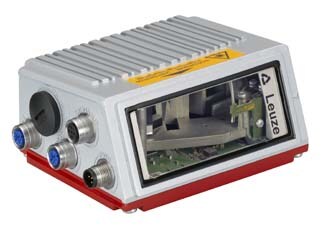Stationaire barcodelezers 1D
Barcodelezers voor talrijke identificatietaken
Barcodelezers dekken een omvangrijk spectrum aan applicaties op het gebied van intra logistiek en packaging. Net zo veelzijdig is ons productportfolio, dat reikt van een basic-barcodelezer met een optimale prijs-/prestatieverhouding tot een high-end-barcodelezer voor 1.000 scans/s. In een dialoog met onze klanten ontwikkelen wij de barcode-oplossingen steeds verder. Ons totale barcodelezer-portfolio biedt talrijke uitrustingskenmerken, zoals een omvangrijke, geïntegreerde veldbus-connectiviteit, de codefragmentatietechnologie, modulaire aansluitmogelijkheden en een geïntegreerde switch.
Uw voordeel
Parametreren vanaf uw bureau, met integrated connectivity
Consequent systeem: dezelfde apparaatarchitectuur bij verschillende eisen door een uniform parametreringsconcept, dezelfde montagemogelijkheden, evenals consequente functionaliteit.
Permanente Leuze service: betrouwbare en snelle projectplanning en productkeuze, door de wereldwijde aanwezigheid van de Leuze experts.
Meerwaarde 1: integrated connectivity
Bij barcodelezers van Leuze zijn de meest belangrijke interfaces al geïntegreerd. Dit noemen wij: integrated connectivity. Dit betekent dat u uw bestaande besturing kunt blijven gebruiken. De parametrering van de barcodelezer gebeurt automatisch tijdens de ingebruikname van de veldbus.
| Integrated connectivity betekent,... | Uw voordeel |
| ...u werkt uitsluitend in de bekende besturingsomgeving. | Geen inwerken in onbekende software. |
| ... U kunt de parametrering vanaf uw bureau uitvoeren | U hoeft niet naar de installatie te gaan met technische apparatuur. |
| ... U monteert alleen de sensoren en dus 50% minder apparatuur. | Geen installatie van extra gateways of aansluitdozen vereist. |



Meerwaarde 2: consequent barcodelezer portfolio
Dezelfde apparaatarchitectuur bij verschillende eisen
Alle barcodelezers hebben een vergelijkbare functionaliteit. De parametrering gebeurt bij alle apparaten via een uniform concept en identieke processen, onafhankelijk van de productvariant.
Snellere en betrouwbare ingebruikname bij applicaties
- Eenvoudige projectplanning
- Dezelfde montagemogelijkheden
- Alle varianten ook voor diepvriestoepassingen
Meerwaarde 3: service – overal en altijd voor u beschikbaar
Onze pre- en after-sales-service adviseert u in alle fasen van het project. Een betrouwbare en snelle projectplanning en productkeuze worden gegarandeerd door de wereldwijde aanwezigheid van intra logistiek experts.
- U levert de gegevens, wij de knowhow
- Uitgebreide ervaring voor de perfecte inbouwpositie van de barcodelezers
- Gedetailleerde barcode-analyse voor de hoogst mogelijke leessnelheden van de installatie
- Snelle hulp voor hoge installatiebeschikbaarheid en installatieveiligheid

Ons serviceconcept voor u
| 1. Vastleggen van de eisen en definiëren van de oplossing | ||
|
|
| |
| 2. Montageschetsen voor een optimale positie | ||
|
|
| |
| 3. Gedetailleerde barcode-analyse | ||
|
|
| |
| 4. Ingebruikname en after-sales | ||
|
|
|
Hoogtepunten
Barcodelezers met talrijke uitrustingskenmerken



Hoge installatiebeschikbaarheid door perfecte leeszekerheid
De 'Code Reconstruction Technology' maakt het mogelijk om codes te herkennen op op deels vernielde, vervuilde of verdraaide barcodelabels, ook onder de grootste hellingshoeken. Hierbij werkt onze code-reconstructietechnologie zodanig, dat op basis van individuele, onbeschadigde codefragmenten van de totale code, de volledige code weer kan worden samengesteld.
Met zekerheid lezen van barcodes met slecht contrast
Al onze barcodelezers werken met een scansnelheid (tastfrequentie) van 800 - 1000 scans/sec. Na elke scan wordt de elektronica, bijv. filter en versterker, aangepast aan het ontvangstsignaal (Adaptive Signal Adjustment). Hierdoor wordt het contrast tussen streepjes en tussenruimten geoptimaliseerd.
Portfolio verwarmde barcodelezers
Door de geïntegreerde verwarming in het volledige barcodelezer portfolio, werkt de elektronica betrouwbaar tot -35 graden Celsius. Hierdoor wordt gewaarborgd dat de optiek niet beslaat of dichtvriest.



Dit vormt de basisbouwsteen voor de digitale transformatie van uw intra logistiek
De Leuze barcodelezer BCL 348i is gecertificeerd volgens OPC UA. Er vindt een gestandaardiseerde gegevensuitwisseling plaats op alle niveaus van de automatiseringspiramide, tot in de cloud. Hierdoor wordt een snelle verbinding met dashboards en andere applicaties gewaarborgd. De beoordeling van de sensorgegevens gebeurt dan met een druk op de knop.
Snellere uitlijning, ingebruikname en foutzoeken
De barcodelezers van Leuze hebben een optioneel display. Hierop worden leesresultaten en leeskwaliteit direct ter plekke weergegeven. Dit maakt een efficiëntere en nauwkeurige uitlijning mogelijk.
Snellere en comfortabele ingebruikname
Het MAC-adres bevindt zich als verwijderbare sticker (adres-link-label) op elke scanner. Deze sticker kan eenvoudig in het elektrisch schema worden geplakt. Geen tijdrovende toewijzing van het MAC-adres aan de scanners bij de ingebruikname.



Geen extra triggerfotocellen vereist
Met de autoReflAct-functie van Leuze kan de barcodelezer ook zonder extern schakelsignaal worden geactiveerd.
Minder foutieve lezingen bij extreme toepassingsscenario's
Ook onder extreem kleine hoeken is een betrouwbaar lezen van de code gewaarborgd. Dit wordt mogelijk gemaakt door speciaal ontwikkelde optiek en analoge elektronica, evenals door de hoge functiereserve. Bij een minimale afstand tussen laser en barcode, de zogenaamde nulafstand, worden codes eveneens betrouwbaar geregistreerd.
Hogere performance zonder speciale communicatiearchitectuur
Meerdere barcodelezers kunnen eenvoudig worden gekoppeld en een gemeenschappelijk decoderingsresultaat leveren. Hierdoor hoeft de host geen no-read-resultaat te verwerken en wordt een verbeterde performance gewaarborgd. Als communicatieplatform maken de barcodelezers van Leuze gebruik van het aanwezige Ethernet-netwerk. Hiervoor hoeft geen eigen communicatiearchitectuur te worden opgebouwd.
Kennis
Hoe kunt u uw installatiebeschikbaarheid ondanks beschadigde of slecht afgedrukte barcodes hoog houden?
Deze vraag wordt beantwoord in onze "Barcodelezer-Talk".
Welke voordelen heeft een hoge functiereserve bij barcodelezers voor u? Wanneer bewijst de functiereserve zijn waarde?
Dit beantwoorden wij in onze "Barcodelezer-Talk", met onze expert voor intra logistiek.
Hoe bouwt u zeer eenvoudig een lijn-topologie op met barcodelezers? Welke voordelen biedt dit in vergelijking met een ster-topologie?
Deze vragen worden beantwoord in de "Barcodelezer-Talk".
Geeft een barcodelezer bij bakkentransport alleen nog "No-Reads"? Hoe kunnen het oplossen van storingen en een eenvoudige apparaatwissel worden uitgevoerd zonder specialistische kennis?
Het antwoord hierop geven wij u in het vierde deel van onze videoserie korte "Barcodelezer-Talk".
Geleide bak- en tray-identificatie eenvoudig gemaakt

Sven-Philipp Abraham
Product Manager identificatiesystemen bij Leuze
Interview
Leuze geldt als expert op het gebied van identificatie en levert al sinds de jaren 90 barcodelezers. Het betreffende productportfolio wordt steeds verder doorontwikkeld. De barcodelezers voldoen aan talrijke eisen binnen de intra logistiek en zijn zo geschikt voor uiteenlopende applicaties. Met onze nieuwe stationaire barcodelezer BCL 200i presenteren wij u een nieuwe toevoeging aan onze BCL-serie. Deze ondersteunt de geleide bak- en tray-identificatie en is bijzonder geschikt voor krappe inbouwsituaties langs de transportbaan.
Waar zijn 1D-barcodes voldoende?
1D-barcodes worden typisch toegepast bij applicaties waarbij een identificatie van 10 tot 20 tekens voldoende is. Bovendien moet er voldoende plaats zijn voor een label, bijvoorbeeld op een transportbak.
Welke voordelen bieden ze t.o.v. 2D-barcodes?
In het verleden waren er door de afdruktechnologie voordelen bij 1D-barcodes. Op dit moment zijn de voordelen van 1D-barcodes vrijwel niet meer aanwezig. 1D-barcodes kunnen door de meeste codelezers op de markt worden gelezen.
Waar moet u op letten bij het herkennen?
Bij de herkenning van codes met 1D-barcodelezers moet men bij de projectplanning en het ontwerp van de 1D-barcode rekening houden met enkele wezenlijke punten. De correcte afstand of de uitlijning van de code in hek-, resp. ladderoriëntatie zijn slechts twee voorbeelden. Bij het ontwerp van 1D-barcodes heeft de modulebreedte, dus de smalste breedte van de zwarte balk, een wezenlijke invloed op de keuze van de juiste codelezer. Het is essentieel dat de barcode binnen het gegarandeerde leesveld van de codelezer ligt.


Welke 1D-barcodelezers biedt Leuze?
Leuze biedt een zeer omvangrijk portfolio. Onder andere voor de verpakkingsindustrie of de intra logistiek. Afhankelijk van de toepassing worden de series BCL 92, BCL 200i/300i, BCL 500i/600i of BCL 900i hier toegepast.
Wat onderscheidt ze?
De codelezers zijn geoptimaliseerd voor verschillende applicaties. De BCL 92 bijvoorbeeld op het gebied van etiketteermachines. BCL 200i/300i voor het grote taakgebied van bak- en tray-transporttechniek. BCL 500i/600i/900i voor pallet- en doos-identificatie.
Downloads
Artikellijst
- Serie: BCL 600i
- Interface: EtherNet IP
- Functies: Codefragmenttechnologie, Afstelmodus, AutoConfig, ...
- Serie: BCL 600i
- Interface: EtherNet IP
- Functies: Afstelmodus, AutoConfig, AutoControl, AutoReflAct,...
- Serie: BCL 600i
- Interface: EtherNet IP
- Functies: Codefragmenttechnologie, Afstelmodus, AutoConfig, ...
- Serie: BCL 600i
- Interface: EtherNet IP
- Functies: Referentiecodevergelijking, Afstelmodus, AutoConfi...
- Serie: BCL 600i
- Interface: EtherNet IP
- Functies: AutoControl, Afstelmodus, AutoConfig, AutoReflAct,...
- Serie: BCL 600i
- Interface: EtherNet IP
- Functies: Referentiecodevergelijking, Afstelmodus, AutoConfi...
- Serie: BCL 600i
- Interface: EtherNet IP
- Functies: LED-indicatie, Afstelmodus, AutoConfig, AutoContro...
- Serie: BCL 600i
- Interface: EtherNet IP
- Functies: Afstelmodus, AutoConfig, AutoControl, AutoReflAct,...
- Serie: BCL 600i
- Interface: PROFINET
- Functies: LED-indicatie, Afstelmodus, AutoConfig, AutoContro...
- Serie: BCL 600i
- Interface: PROFINET
- Functies: LED-indicatie, Afstelmodus, AutoConfig, AutoContro...
- Serie: BCL 600i
- Interface: RS 485
- Functies: Referentiecodevergelijking, Afstelmodus, AutoConfi...
- Serie: BCL 600i
- Interface: RS 485
- Functies: AutoConfig, Afstelmodus, AutoControl, AutoReflAct,...

